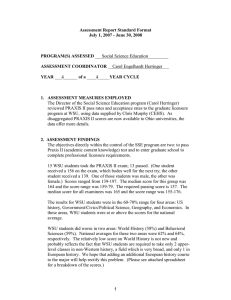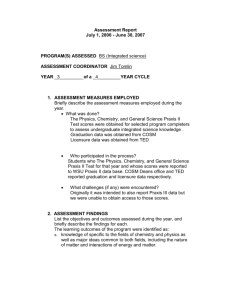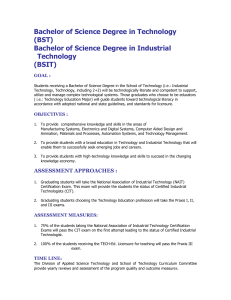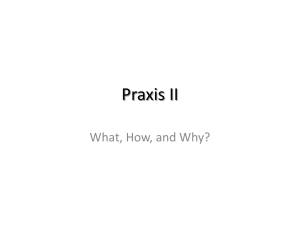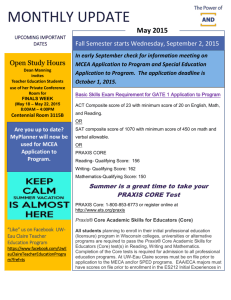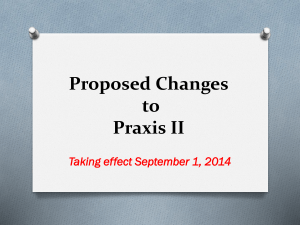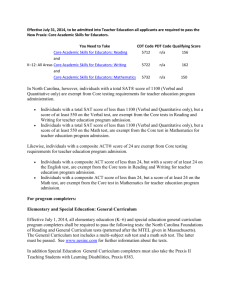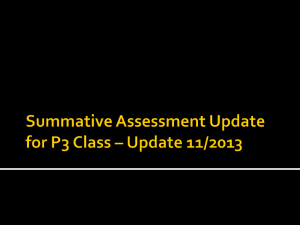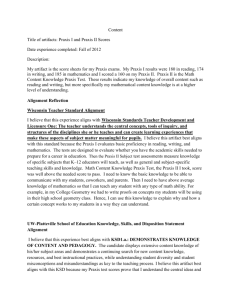Integrated Science Education Bachelor of Science Program
advertisement
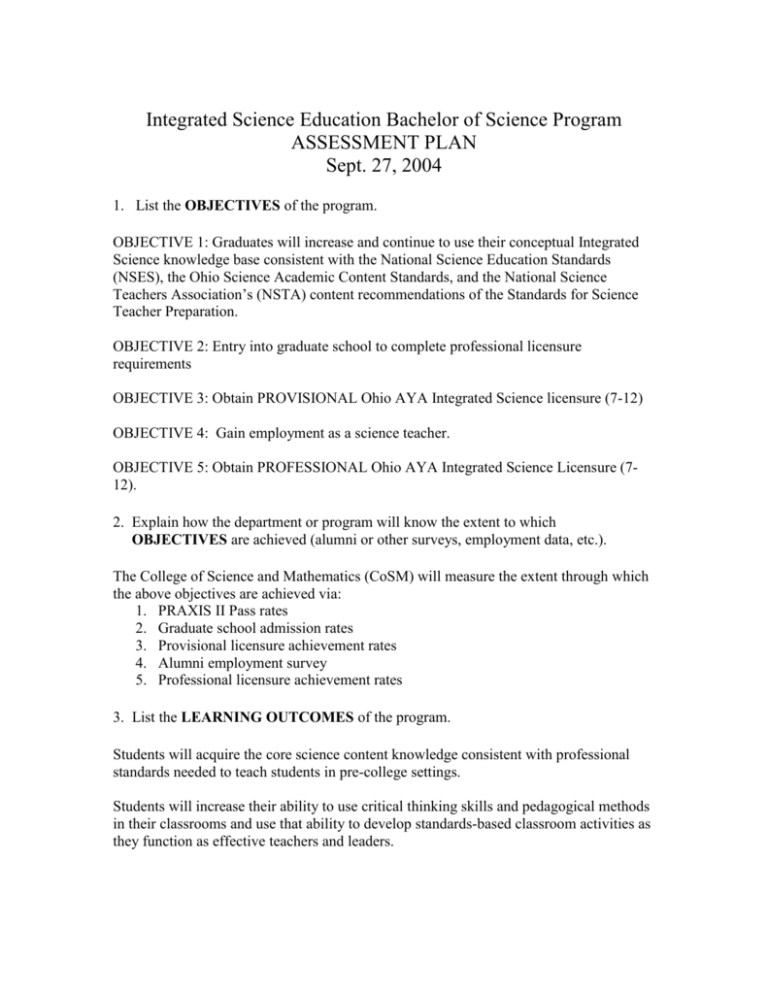
Integrated Science Education Bachelor of Science Program ASSESSMENT PLAN Sept. 27, 2004 1. List the OBJECTIVES of the program. OBJECTIVE 1: Graduates will increase and continue to use their conceptual Integrated Science knowledge base consistent with the National Science Education Standards (NSES), the Ohio Science Academic Content Standards, and the National Science Teachers Association’s (NSTA) content recommendations of the Standards for Science Teacher Preparation. OBJECTIVE 2: Entry into graduate school to complete professional licensure requirements OBJECTIVE 3: Obtain PROVISIONAL Ohio AYA Integrated Science licensure (7-12) OBJECTIVE 4: Gain employment as a science teacher. OBJECTIVE 5: Obtain PROFESSIONAL Ohio AYA Integrated Science Licensure (712). 2. Explain how the department or program will know the extent to which OBJECTIVES are achieved (alumni or other surveys, employment data, etc.). The College of Science and Mathematics (CoSM) will measure the extent through which the above objectives are achieved via: 1. PRAXIS II Pass rates 2. Graduate school admission rates 3. Provisional licensure achievement rates 4. Alumni employment survey 5. Professional licensure achievement rates 3. List the LEARNING OUTCOMES of the program. Students will acquire the core science content knowledge consistent with professional standards needed to teach students in pre-college settings. Students will increase their ability to use critical thinking skills and pedagogical methods in their classrooms and use that ability to develop standards-based classroom activities as they function as effective teachers and leaders. 4. List and briefly describe the MEASURES that will be used to assess each learning outcome. PRAXIS II test scores (composite and disaggregated subscale) data analysis. Comparison of WSU integrated science education students’ performance on the PRAXIS II and PRAXIS III tests with other integrated science education programs in Ohio. 5. Describe how learning outcomes are made MEASURABLE and BENCHMARKS or other determinants of success are set. The above Learning Outcomes are made measurable by using the following instruments and benchmarks: 80% of WSU integrated science education students pass the PRAXIS II tests. 80% of WSU integrated science education students pass each component subscale of the PRAXIS II tests with a minimum of 75%. 90% of WSU integrated science education students seeking employment succeed within one year of entering the job market. 80% of WSU integrated science education students pass the PRAXIS III assessment. 6. Describe the process by which FINDINGS will be derived from the measures. A task force of science educators will annually assess the performance measures to determine areas of program strengths and weaknesses and plan for the implementation of any necessary remedial actions . 7. Describe the process by which findings are analyzed to determine what IMPROVEMENTS should be made to better meet objectives and learning outcomes. Each natural science department providing support curriculum and faculty to the program will be apprised of the findings from task force’s assessment and its recommendations. 8. Identify a TIMETABLE for assessment. The Assessment Plan has annual tasks over its four-year cycle. The cycle will begin in the 2004-2005 academic year. Assessment scores and survey results will be compiled and formatively assessed each year, and a summative program assessment will take place during the fourth year of the assessment cycle by the assessment task force. Feed-back from both formative and summative assessments will be made available to faculty in order to improve courses and the overall program. 9. Briefly explain how the program’s assessment plan supports and interacts with ACCREDITATION and LICENSURE requirements (if applicable). This Assessment Plan will be integrated with the assessment requirements of NCATE and other accreditation agencies needed for the continuing accreditation of Wright State University. 10. Describe how the objectives and learning outcomes of the program are COMMUNICATED to students and others. Fliers outlining program requirements and goals distributed to students and parents of students. Advisor checksheets Undergraduate catalog program description Welcoming letters to students following admission to the program.
